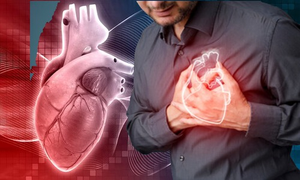London, March 30 (IANS). Artificial intelligence (AI) can help scientists to identify patients who are at risk of severe heart irregularity (arithmia), which can cause heart attack and sudden death.
Researchers from the Group of Public Hospitals (AP-HP) of Paris in Paris, Paris Site University and Paris have conducted a new study in collaboration with American scientists. This study will be published in the European Heart Journal. In this study, he has created a network of artificial neurons imitating human brain.
Researchers analyzed electrocardiogram (ECG) data of more than 2,40,000 patients. This artificial intelligence -based algorithm identified patients in 70% of cases who were at risk of deadly arithmia in the next two weeks.
Every year, there are more than 5 million deaths worldwide due to sudden heart rate.
This technique can help identify irregular heart beats (arithmia) in advance. If this problem becomes serious, it can be fatal.
Under this study, engineers of a company called Cardiology (Philips Group) in collaboration with Paris City University and Harvard University created an artificial nerve network. Its purpose is to improve the prevention of deaths due to sudden heart rate.
Researchers studied ECG data of 2,40,000 patients collected from six countries (America, France, Britain, South Africa, India and Czech Republic). In this process several million hours of heart vibrations were analyzed.
With the help of AI, scientists have discovered new signs that may indicate the risk of Arithmia.
“We analyzed a 24 -hour heart electrical signal.” We analyzed a 24 -hour heart electrical signal. This helped us to understand which patients are likely to develop serious arithmia in the next two weeks, “says Dr. Laurent Foreina of Paris Cardiovascular Research Center (PARCC).
Although this technique is currently in the testing phase, it was able to identify risky patients in 70% of cases in the study and to separate safe patients in 99.9% of cases.
In the future, this algorithm can be used for monitoring risky patients in hospitals. If its functionality is further improved, it can also be included in devices such as blood pressure measuring holter monitors and smartwatches.
Now researchers are planning to conduct new clinical tests to test the effectiveness of this model under real circumstances.
-IANS
AS/










